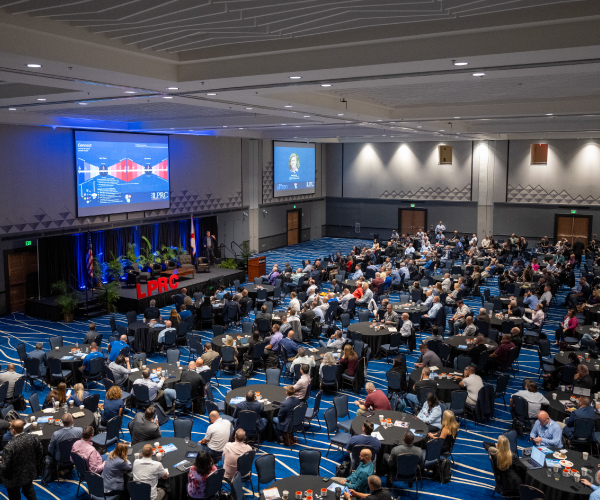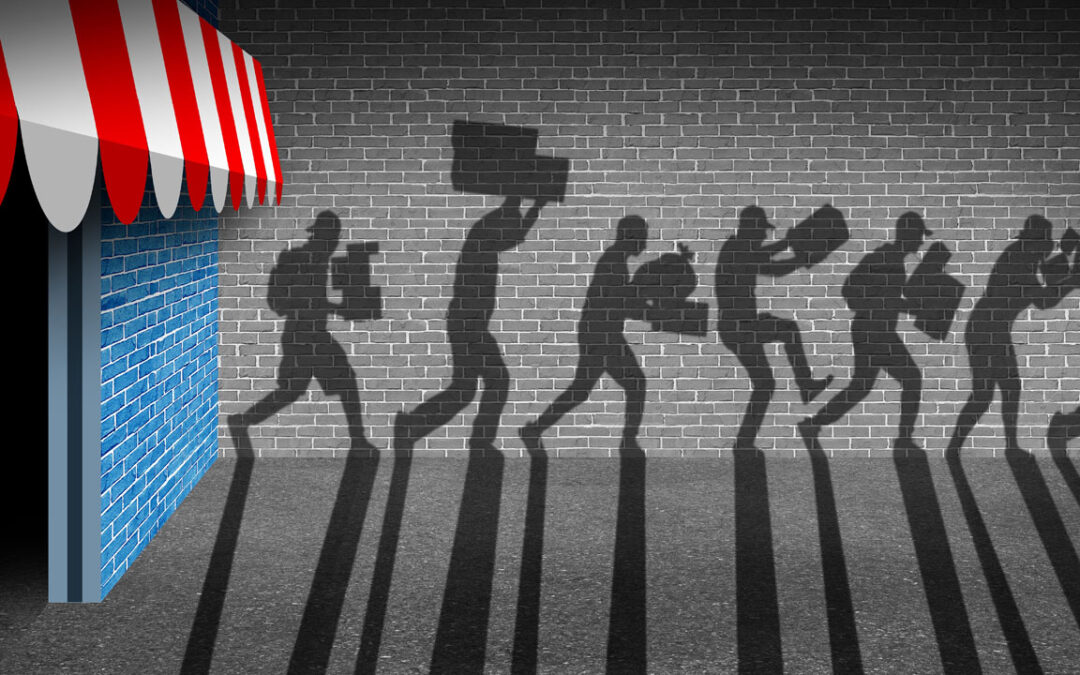As retail violence continues to escalate, the Loss Prevention Research Council (LPRC) presents the "Five Zones of Influence" model to help retailers address and prevent these threats more...

You can find loss prevention in retail media coverage in a wide range of sources, from daily newswires to industry publications. We curate the most relevant articles and posts in one convenient location for LPRC members and visitors to our site.

As retail violence continues to escalate, the Loss Prevention Research Council (LPRC) presents the "Five Zones of Influence" model to help retailers address and prevent these threats more...

IMPACT 2025 drew record-breaking attendance with over 670 participants and a sold-out expo, celebrating 20 years of growth. The event continues to lead the industry in fostering collaboration and innovation in loss prevention and asset protection. Read the full...

At the upcoming SPECS 2025 conference, Read Hayes, director of the Loss Prevention Research Council (LPRC), will share insights on strategies retailers can implement to safeguard their operations. The event takes place at the Gaylord Texan in Grapevine, Texas on March...
IMPACT 2025 drew record-breaking attendance with over 670 participants and a sold-out expo, celebrating 20 years of growth. The event continues to...
At the upcoming SPECS 2025 conference, Read Hayes, director of the Loss Prevention Research Council (LPRC), will share insights on strategies...
NASHVILLE, Tenn. (WKRN) — Violence toward retail workers is rising across the country, according to new research. A recent study from the Loss Prevention Research Council (LPRC) showed that 40% of retail workers are likely to leave their current jobs...

Retailers reported a 93 percent increase in the average number of shoplifting incidents per year in 2023 versus 2019 and a 90 percent increase in dollars lost due to shoplifting over the same time period, according to a new study released by the National Retail...
NASHVILLE, Tenn. (WKRN) — Violence toward retail workers is rising across the country, according to new research. A recent study from the Loss Prevention Research...
Retailers reported a 93 percent increase in the average number of shoplifting incidents per year in 2023 versus 2019 and a 90 percent increase in dollars lost due to...
Retailers may consider a range of tactics to deter shoplifting, from visible cameras to employee training to AI. Read full article here.
InStore.ai, a pioneer in voice-driven business optimization for the retail industry, has entered into a strategic partnership with the Loss Prevention Research...
A startling report from the Loss Prevention Research Council (LPRC) and Verkada reveals that more than 40% of U.S. retail workers may quit their jobs within a year due to...
With more than 4.6 million establishments, 55 million jobs and $5.3 trillion in annual sales, the US retail industry is vital to the economy and daily life. As a prime...
The Loss Prevention Research Council (LPRC), a community of retailers, solution partners, and industry leaders dedicated to advancing evidence-based retail crime prevention,...
GAINESVILLE, FL, UNITED STATES, November 19, 2024 /EINPresswire.com/ -- The Loss Prevention Research Council (LPRC), a community of retailers, solution partners, and...
Reacting to what’s in front of you at the moment will not get the job done. It has led us to where we are now. This may seem like a blunt way to start my letter, but hear me...
Advancements in sensor technology have paved the way for street lighting to evolve into an “intelligent” system, capable of detecting pedestrians’ behaviors and dynamically...
Read full article here.
Loss Prevention Magazine - The Life Safety Alliance (LSA) has announced its Top 40 Global Thought Leaders in Security and Life Safety, recognizing professionals who have...
The Guardian - Discover how authorities are addressing the rise of a black market for valuable LEGO sets, and learn from Dr. Read Hayes about the crucial role of effective...
Security Info Watch - The Life Safety Alliance recently announced the leading experts in security and life safety, including Dr. Read Hayes of LPRC. Explore how their...
KissFM1053 - The Springfield Police Department has successfully recovered over $200,000 of stolen LEGO sets after conducting a thorough three-month investigation into a...
CBS12 NEWS - Self-checkout systems are quickly becoming the norm, yet their convenience has introduced a new array of theft-related challenges. Read the full article here.
NBC NEWS - As shoplifters become more aggressive and inventory losses are primarily driven by theft, learn how retailers are using body cameras to prevent retail theft and...
FOX35ORLANDO.COM (FOX35) - As worldwide shoplifting surges, especially organized crime (up 26%), retailers seek help from the LPRC by using innovative tech and tactics to...
CBSNEWS.COM - As shoplifting costs retailers billions., correspondent Rita Braver explores the LPRC's efforts to help retailers fight theft with futuristic strategies. Read...
GLOSSY.CO - CHP's Organized Retail Crime Taskforce has seized over $41 million in stolen goods since 2019, exposing a surge in ORC and prompting a united...
Renowned Asset Protection Leader Mike Lamb Selected as LPRC’s INNOVATE Program Senior Advisor GAINESVILLE, April 1st, 2024- Retail crime victimization continues to create...
YAHOO!FINANCE - Learn how AI in retail stops theft as Target, Walmart, and Home Depot team up on tech like heat maps to predict and prevent major losses, keeping everyone...
University of Florida - At the LPRC INTEGRATE Summit, retail professionals tackle theft, fraud, and violence and discuss preventing active shooters, emphasizing...
ALLIGATOR.ORG - The University of Florida's SaferPlaces Lab tests 400+ retail anti-theft tech devices in a mock store, helping curb theft and protect businesses...
News4JAX.com - The University of Florida's SaferPlaces Lab combats shoplifting by testing innovative technology to protect stores & shoppers, saving you money....
Research, innovate, collaborate, inform, engage—that was the message as the Loss Prevention Research Council (LPRC) started off 2025 with a bang at the LPRC Kick-off Meeting...
MAINSTREETDAILYNEWS.COM - Alachua Sheriff partners with Butler Plaza for a new substation to boost security, shorten response times, and keep shoppers safe at a...
NVIDIA.COM - NVIDIA & LPRC team up with AI firms to fight organized retail theft and provide real-time alerts on suspicious activity in stores that can revolutionize...
STLTODAY.COM - Schnucks supermarket chain fights liquor theft with phone-accessed cabinets to deter shoplifters while offering a smooth experience for honest shoppers. Read...
NIRO Knowledge is a podcast for those looking to learn about crime analysis and evidence based policing from those within the community. Listen to the full podcast here.
Today we are joined by Read Hayes, PHD from The Loss Prevention Research Council to talk about his innovative method of interviewing thieves to better understand the key...
The Loss Prevention Research Council (LPRC) at the University of Florida plays an important role in the retail loss prevention industry, providing evidence-based research...
Intelligence & insight from the world of retail risk. Hosted by Paul Bessant. Listen to the podcast here.
Retailers are increasingly leveraging self-checkout (SCO) systems to reduce customer friction, improve margins, and better compete with online shopping convenience....
GAINESVILLE, Fla. (FOX 13) - We see crazy robbery attempts caught on security camera all the time. But at a "store" in Gainesville, the crimes are on purpose, and the...
You’re visiting the grocery store when the announcement “spill in aisle four” sounds off. Since you’re on aisle three, you take a peek to see if you might help out. As you...
"We've seen organized shoplifting. We've seen violent shoplifting. But we've never seen the type of organized shoplifting that we've seen lately," said Read Hayes, a...
“We will do what we need to do to put an end to this madness,” San Francisco Police Chief Bill Scott said after several high-end retailers were targeted in a wave of...
Best Buy shoppers can expect to find more high-value merchandise behind locked shelves and a larger security presence in certain stores. Read the full article here.
The four thieves swapped stories, comparing what and how they like to steal. One prefers to enlist the help of employees to tip him off when a delivery arrives. One heads...
Shoplifting at grocery stores is pervasive. Thieves get away with more than $35 million worth of goods each day, according to the National Association for Shoplifting...
“It’s just a huge spike in theft when the sun goes down,” employee Cole Howard said. Howard says there’s been a major increase in theft since the start of the pandemic....